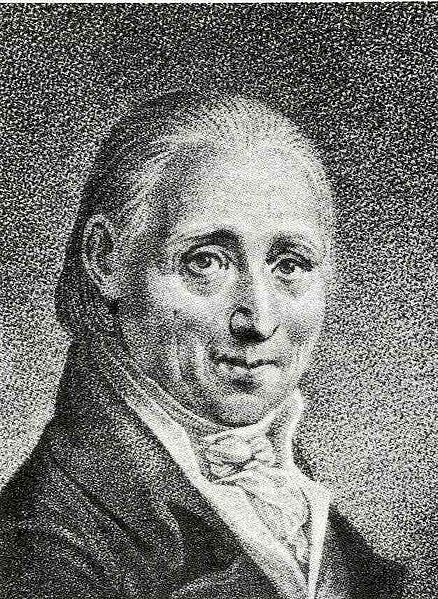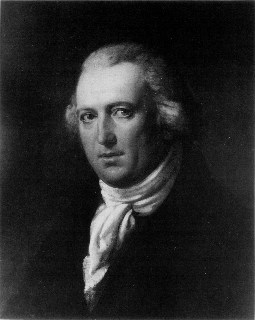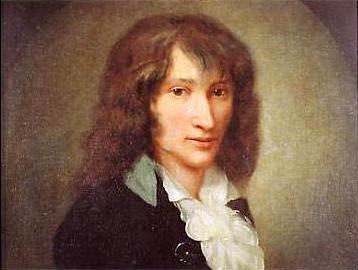<Back to Index>
- Composer Johann Baptist Vanhal, 1739
- Composer and Keyboardist Johann Gottfried Müthel, 1728
PAGE SPONSOR


Johann Baptist Vanhal (Jan Křtitel Vaňhal) also spelled Waṅhal (the spelling the composer himself and at least one of his publishers used), Wanhal or Wanhall (May 12, 1739 – August 20, 1813) was an important classical music composer. He was born in Nechanice, Bohemia, and died in Vienna.
Born in Nechanice, Bohemia, to a Czech peasant family, Vanhal received his early training from a local musician. From these humble beginnings he was able to earn a living as a village organist and choirmaster. The Countess Schaffgotsch, who heard him playing the violin, took him to Vienna in 1760, where she arranged lessons in composition with Carl Ditters von Dittersdorf. Further patronage helped him to travel and gain further knowledge of music and by the age of 35, he was moving in exalted musical company: it is reported he played quartets with Haydn, Mozart and Dittersdorf. Vanhal tailored his output to economic realities of the day and ceased writing symphonies in the late 1770s. He wrote three operas: Il Demofoonte (1770), Il trionfo di Clelia (1770) and The Princess of Tarento. In the 1770s, Vanhal met the contrabassist Johannes Matthias Sperger and wrote a double bass concerto for him. The English music historian Charles Burney visited Vanhal in 1772. Mozart performed Vanhal's Violin Concerto in B flat in Augsburg in 1777. In or around 1784, Haydn, Dittersdorf, Mozart and Vanhal played string quartets together; Haydn and Dittersdorf played the violins, Mozart the viola, and Vanhal cello. The recorder of this event, the composer and tenor Michael Kelly, stated that they played well but not outstandingly together, but the image of four of the great composers of the time all joined in common music making is still a classic image of the Classical era.
Vanhal was reported to have suffered from an unspecified nervous disorder, which eventually went away, but which gave rise to the opinion held by Burney and others that the quality of Vanhal's compositions deteriorated with the disappearance of his condition. Scholars such as Paul Bryan find that "the quality and quantity of the serious works he [Vanhal] composed after 1770, ... belie that assertion."
He had to be a prolific writer to meet the demands made upon him, and attributed to him are 100 quartets, at least 73 symphonies, 95 sacred works and a large number of instrumental and vocal works. The symphonies, in particular, have been committed increasingly often to compact disc in recent times, and the best of them are comparable with many of Haydn's. Many of Vanhal's symphonies are in minor keys and are considered highly influential to the "Sturm und Drang" movement of his time. "Vanhal makes use of repeated semiquavers, pounding quavers in the bass line, wide skips in the themes, sudden pauses (fermatas), silences, exaggerated dynamic marks ... and all these features ... appear in Mozart's first large scale Sturm und Drang symphony, no. 25 in g minor (K. 183) of 1773." This kind of style also appears in Joseph Haydn's Symphony No. 83 in g minor, The Hen (1785), and Muzio Clementi's Sonata in g minor, Op.34, No.2 (circa 1795).
Such was his success that within a few years of his symphonies being written, they were being performed around the world, and as far distant as the United States. In later life, however, he rarely moved from Vienna where he was also an active teacher.

Johann Gottfried Müthel (January 17, 1728 – July 14, 1788) was a German composer and noted keyboard virtuoso. Along with C.P.E. Bach, he represented the Sturm und Drang style of composition.
As far as is known, he was the first to use the term fortepiano in a published work, in the title of his Duetto für 2 Clavier, 2 Flügel, oder 2 Fortepiano (1771), which reflects the rising popularity of the fortepiano at that time.
He was born in Mölln in the Duchy of Lauenburg, the fifth of nine children. His father was Christian Caspar, an organist and friend of Georg Philipp Telemann. He studied music with his father, and later Johann Paul Kunzen in Lübeck. In 1747, at age 19, he became a court organist and cembalist for Duke Christian Ludwig II of Mecklenburg - Schwerin, in Schwerin.
In 1750 he was given leave to study with Johann Sebastian Bach in Leipzig. He became Bach's last pupil, beginning study only three months before the master's death. In that time, he notated a number of the blind composer's final works, including the Chromatic Fantasia and parts of the Orgelbüchlein. According to Bach's biographer Philipp Spitta, he was present at Bach's deathbed, and took over his duties for nine weeks. Afterwards, he continued study with Johann Christoph Altnickol, who had also been living and studying with Bach. Afterwards he took the opportunity to travel and meet other composers, the most notable of whom was C.P.E. Bach (then residing at the court of Frederick II of Prussia at Potsdam), with whom he maintained a lifelong friendship and correspondence. In 1751 he returned to the ducal court, where he remained for two more years, eventually being replaced by his younger brother.
In 1753 he moved to Riga (now in Latvia, then part of the Russian Empire), where one of his brothers had moved. It was here that he published his first works, in 1756; he only published a few works in his lifetime. At first he worked as a conductor for a private orchestra; later, he was appointed organist at St. Peter's Church, which he served from 1767 until 1788, when he died in nearby Bienenhof.
Riga was far from the established musical centers of Europe; he published few works, but he gained praise from a number of musicians for his virtuosity. The English music historian Charles Burney, who mentioned him several times in his writings, held him in high esteem. The German Christian Friedrich Daniel Schubart wrote of his harpsichord skill that "connoisseurs that have heard him cannot praise enough the quickness, correctness and lightness with which he conquers mountains of difficulties."
He is believed to have been a skilled improviser on the keyboard. He seems to have preferred the clavichord.
Most of his works remained unpublished in his lifetime, and some known works are still without official publication. None of the works for his principal instrument, the organ, were published in his lifetime, nor were any for non - keyboard instruments.